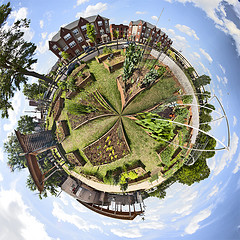
Remember back when? Back when you needed to have a .edu account to get into your college’s Facebook network? And then remember when your company could start up a “network” and you could join in? But once you got in, it really just became a label on your profile. Nobody could send a message to the “network.” No members could vote on who administered the “network.” These were containers without purpose. When Facebook abandoned these vacuous networks, nobody really cared. After all there were still “pages.” And “likes” and, for a while, “fans.” Like many others, I became one of the “citizens for boysenberry jam” fans.
Of course, as of now, Facebook has become the monster platform for microblogging, social gaming, and media sharing. In actual terms, every individual member of Facebook is a customer for one giant network managed by Facebook (for its own purposes—read: IPO). Despite some attempts to provide for member input into its rules, Facebook continues to mold the user experience to meet its own goals. Getting a Facebook account is like moving into a city of 500 million people without a map and no way of fostering anything like a neighborhood that responds to your needs.
This membership model is significantly different from, say, the Ning model, where communities of interest spun up their own networks, and within these networks, smaller working-groups for focused collaboration and event planning. The real problem with the Ning model is discoverability. The networks are too small and their visions mostly too modest for them to have much of a presence on the big-bad web. They are like villages in the valleys; useful for their core membership, but not likely to grow into anything significantly more than what they were in the beginning. Here you’ll find brands and fans and NGOs galore. The sites are better than web portals for many purposes, but surely there’s something missing.
This something is what I would call the “town-effect.” A town is bigger than a village and smaller than a city. Neighbors live in a town, but so do strangers. So there are new people to meet. Unexpected, potentially marvelous events might happen. The town has a town hall; some place and some manner of governing what happens and why. This facility for self-governance is entirely lacking from Facebook and is mostly trivial for Ning (where, if you don’t like the network rules, you can always just start your own). The best cities in the world are really made up of several towns. From Seattle to New York to Paris to Rome: residents will tell you the town where they live, rather than the city where they dwell. They live in Fremont, or The Village, or Covent Garden, or Navona. Within these towns people live in neighborhoods where they might know many of the people they meet. But they also cultivate the conviviality of their town as a place to find new friends and opportunities. And when they visit a neighboring town, they know they are strangers only once (thanks Liz!).
The real challenge for the future of social networking is to build a platform where digital towns can emerge. Such a platform would enable a network-of-networks; each of which would be capable of growing into a digital-town, with real self-governance and aspects of community (opportunities for trustful collaborations, reputation building, micro-volunteering). Each network can determine its own membership rules. An individual might be a member of several networks at the same time. The platform would scale up to millions of individual members, but any one network might have ten to fifty thousand.
In the US there are about two million people with PhDs (and twenty-times that number globally). The research interests of these individuals are amazingly diverse. An academic network-of-networks would reasonably contain several dozen networks centered on arenas of interest. Each network is a container that filters the content and amplifies the opportunities of its members. The “early American novel” network would not need to handle content from the “biogenetic structuralism” network. Job opportunities in geology would not show up in the oncology network. Any individual can join more than one network as their own interests dictate. And technical innovation at the platform level “lifts all boats.” Picture every network as a vibrant townscape, and you are approaching the model for this new platform.
Many of the potentials for social networking have not be explored by Facebook, which made the decision early on to dissolve its network-of-networks in favor of one great city. The technology to create this network-of-networks is already here. In fact, this is built into Drupal Gardens (a software add-on to Drupal). I’m still on Facebook. And yet, beyond the possibility that someone from my kindergarden class might decide to friend me, I get very little out of being one among 500 million. I would feel much more productive and at home in a digital town.
Photo Credit: CC licensed by SouthernPixel on Flickr.






